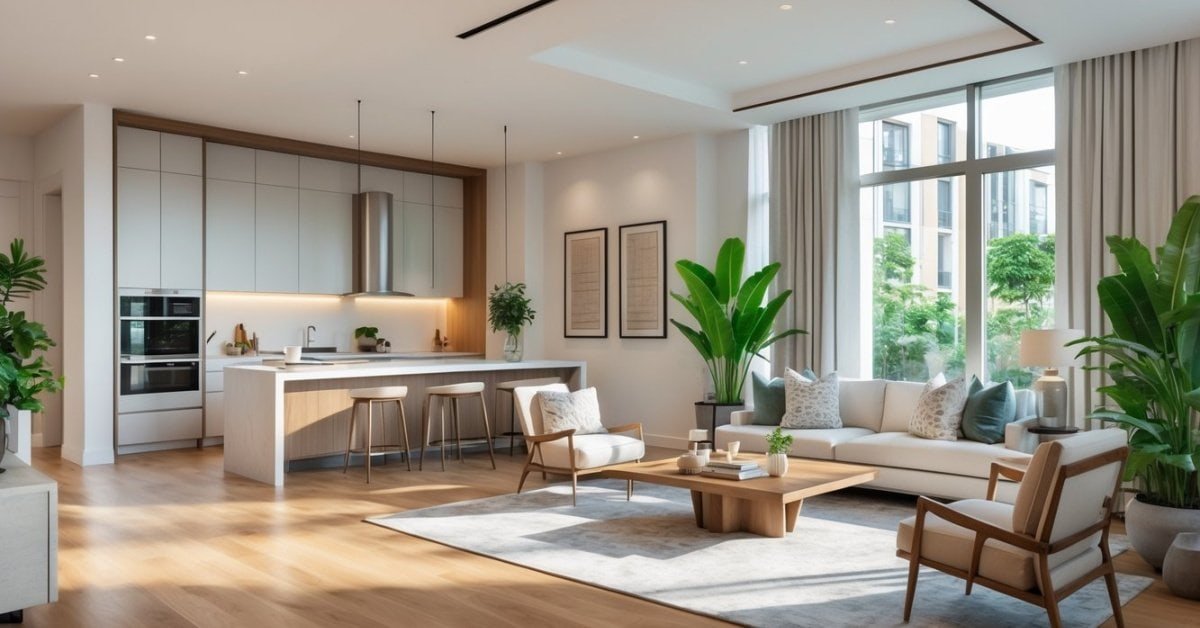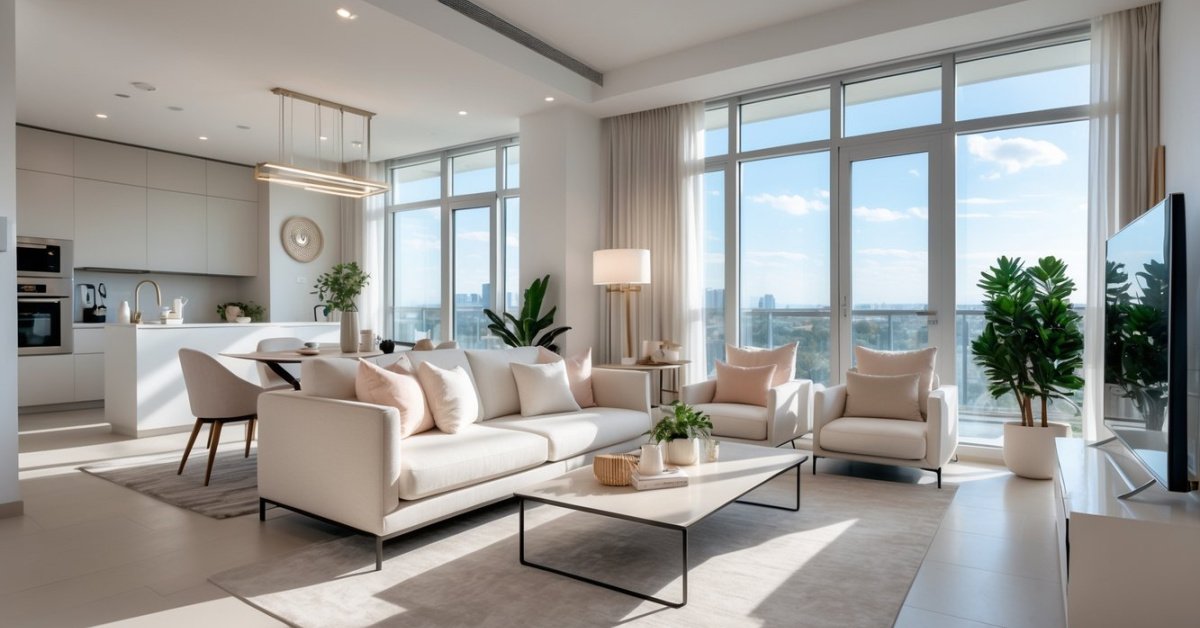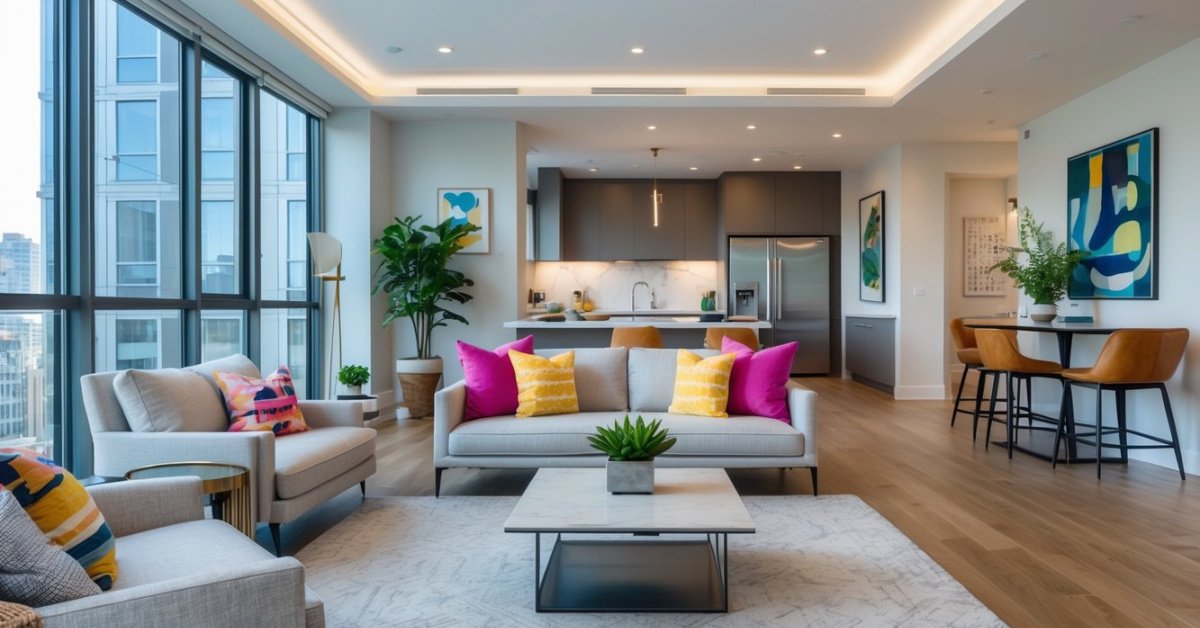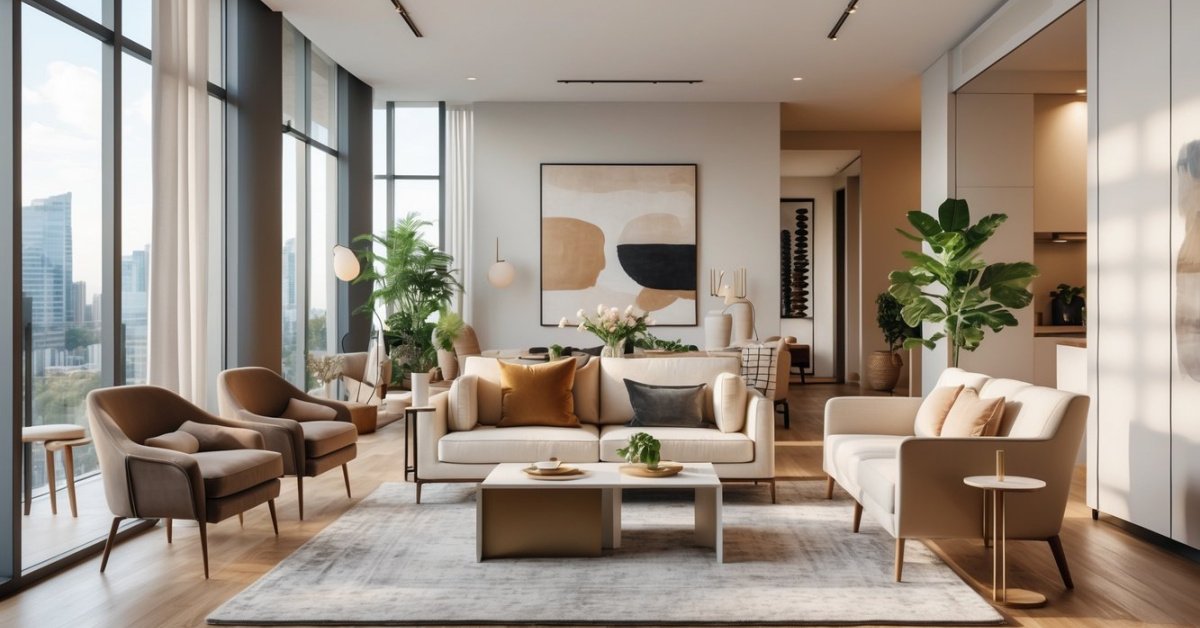Key Takeaways
- Mirrors enhance space and light: They create the illusion of depth, brighten rooms by reflecting natural and artificial light, and make small apartments feel larger and more open.
- Strategic placement matters: Position mirrors opposite windows to amplify sunlight, behind furniture to add depth, or vertically to expand height and width perception in narrow areas.
- Size and style are key: Choose large mirrors for maximum impact in small spaces, and match mirror frames to the room’s decor for a cohesive design. Frameless mirrors are ideal for minimalist spaces.
- Use creativity with groupings: Arrange mirrors in unique layouts, like gallery walls or symmetrical pairs, to add character and visual interest without overwhelming the space.
- Avoid overcrowding and poor lighting: Too many mirrors can make a room feel chaotic, and improperly placed mirrors fail to reflect light effectively. Balance reflective pieces with lighting and empty wall space.
- Maximize functionality and decor: Mirrors work as both practical tools and stylish elements, transforming tight spaces into brighter, more inviting apartments.
Living in a small apartment can feel a bit cramped, but I’ve learned that the right decor tricks can make all the difference. One of my favorite hacks? Mirrors. They’re not just for checking your outfit—they’re a game-changer when it comes to creating the illusion of space.
With a little creativity, mirrors can brighten up dark corners, open up tight spaces, and make your apartment feel way bigger than it actually is. The best part? You don’t need to break the bank or hire a designer to pull it off. A few well-placed mirrors can completely transform your home.
The Power Of Mirrors In Small Spaces
I’ve seen firsthand how mirrors can completely transform small apartments. Mirrors work as practical tools and design elements to make tight areas feel open and inviting. They enhance natural light, trick the eye with depth, and create balance in cramped layouts.
Enhancing Light Sources
Mirrors brighten a space by reflecting natural and artificial light. Positioning a mirror across from or beside a window boosts sunlight throughout the room. Even small wall mirrors next to light fixtures, like sconces or lamps, amplify brightness in darker corners.
Creating Visual Depth
Mirrors expand how a room feels by adding depth. I often recommend placing large mirrors behind furniture, like sofas or dining tables, to stretch the visual boundaries. Floor-length mirrors leaning against walls also give a dramatic, spacious effect.
Highlighting Focal Points
Using mirrors to highlight focal points adds character. When a mirror frames decorative details, like artwork or a shelving unit, it draws attention while subtly making the wall appear larger.
Multiplying Space Perception
Grouping multiple mirrors, like a gallery wall of mismatched mirror frames, can create the illusion of continuity. I’ve designed apartments where staggered mirror panels mimic windows, effectively opening up windowless or compact rooms.
Strategically incorporating mirrors will change how small apartments function and feel.
Choosing The Right Mirrors
When designing a small apartment, selecting the right mirrors is key. The right mirror can completely transform a cramped space, both visually and functionally, without adding clutter.
Size And Shape Considerations
Focusing on size and shape ensures the mirror complements the space. Large mirrors instantly create the illusion of depth, especially in small rooms. For instance, placing a full-length mirror on a narrow wall can make the area appear twice as wide. Round mirrors soften corners and work well in compact areas like entryways. On the other hand, rectangular mirrors add height, making ceilings feel taller.
I always match the mirror size to the wall it occupies. For example, oversized mirrors suit empty walls, while medium or small mirrors fit above consoles or dressers. Custom-shaped mirrors, like hexagons, add personality while still maximizing functionality.
Framed Vs. Frameless Mirrors
Choosing between framed and frameless mirrors depends on the room’s design. Framed mirrors boost the style of a room. I’ve used ornate gold frames for vintage-inspired looks or sleek black frames for modern apartments. Frames also define mirrors as statement pieces when rooms need a focal point.
Frameless mirrors, ideal for minimalist spaces, offer cleaner lines. They’re especially effective when mounted side-by-side to create a wall of reflection. I often use frameless designs for bathrooms or narrow spaces, where simplicity enhances the open feel.
Strategic Placement For Maximum Impact
Mirrors aren’t just functional—they’re transformative when positioned strategically. I’ve learned through years of flipping and designing small spaces that a mirror’s placement can redefine how a room looks and feels.
Creating Depth With Opposite Wall Placement
Placing a mirror on a wall opposite a room’s focal point adds depth and dimension. This works particularly well across from artwork, furniture arrangements, or accent walls. When I renovated compact apartments, I often put large mirrors opposite dining areas or living room centerpieces. A well-placed mirror doubles the visual impact of these elements and makes the room feel like it extends further.
Enhancing Natural Light With Window Mirroring
Mirrors reflect more than just furniture—they can amplify natural light. When positioned directly across from a window, they reflect outdoor views and maximize sunlight. While redesigning apartments with limited windows, I used this technique to brighten dim spaces. For example, a large rectangular mirror mounted opposite a window in a living room can bathe the entire area in natural light, making it feel larger and more inviting without extra lighting fixtures.
Expanding Height And Room Width
Tall mirrors can make ceilings seem higher, while horizontal ones stretch wall width. When I work on layouts dominated by low ceilings or narrow halls, I choose oversized vertical mirrors to emphasize height in entryways or behind furniture. Alternatively, placing a long, horizontal mirror across a couch or bed visually expands the space, creating a wider frame for the room and making it much less cramped. This approach is a game-changer in small bedrooms and slender living rooms.
Styling Tips For Visual Cohesion
Creating visual harmony with mirrors transforms an apartment’s appearance. Thoughtful styling ensures mirrors enhance the space instead of feeling out of place.
Matching Mirror Frames To Decor
Coordinating mirror frames with your existing decor brings a polished look. I recommend choosing materials and finishes that complement the room’s style. For example, a distressed wooden frame pairs well with rustic or farmhouse designs, while a sleek metal frame suits industrial or modern spaces. In minimalist apartments, frameless mirrors or those with thin, neutral-colored frames maintain a clean and cohesive aesthetic. When using framed mirrors, matching the frame color to furniture or trim can tie the room together seamlessly.
Using Multiple Mirrors Creatively
Grouping mirrors in unique layouts creates visual interest without overwhelming the space. I often suggest staggering mirrors of various sizes for gallery-style walls, balancing them with enough empty space for contrast. Placing two identical mirrors symmetrically on either side of key pieces like a sofa or bed establishes order and rhythm. For small apartments, layering mirrors with wall art or shelving maximizes functionality while keeping the design impactful. To elevate the look, experiment with smaller decorative mirrors in bold shapes like stars or hexagons, clustering them above a console table or in narrow hallways.
Common Mistakes To Avoid
When using mirrors to make a small apartment feel bigger, some design choices can work against you. I’ve seen it happen in my projects, so avoiding these mistakes ensures your space reaches its full potential.
Overcrowding Your Space
Filling a room with too many mirrors can make it feel chaotic rather than open. Large or numerous mirrors (like a gallery wall of reflective pieces) should be balanced with empty wall space and complementary decor. Keep the scale of your apartment in mind. In one-bedroom apartments, I’ve found a single oversized mirror or a pair of well-placed mirrors impactful without feeling overwhelming. Don’t cram mirrors into every blank spot, or it’ll make the room feel busier, not bigger.
Poor Lighting Integration
Mirrors lose their impact if they’re not positioned to enhance lighting. Placing them too far from light sources like windows, lamps, or overhead lights reduces their ability to reflect and distribute brightness. In my designs, I always aim to maximize both natural and artificial light by positioning mirrors across from windows or at angles that bounce light deeper into the room. I’ve seen clients place mirrors in dim corners without additional lighting, which doesn’t create the desired spacious effect. Incorporate light fixtures or reposition the mirror for the best results.
Conclusion
Mirrors are such a simple yet powerful tool for transforming small apartments. With thoughtful placement and the right styles, they can make any space feel brighter, more open, and even more stylish. The best part is you don’t need a huge budget or professional help to make it work.
By experimenting with different sizes, shapes, and placements, you can completely change the vibe of your home. Whether you’re amplifying natural light, creating depth, or adding a touch of personality, mirrors truly do it all. Just remember to balance them with your existing decor and avoid overcrowding.
With a little creativity and attention to detail, mirrors can turn even the coziest apartment into a space that feels airy and inviting. So go ahead, grab a mirror or two, and let them work their magic!





